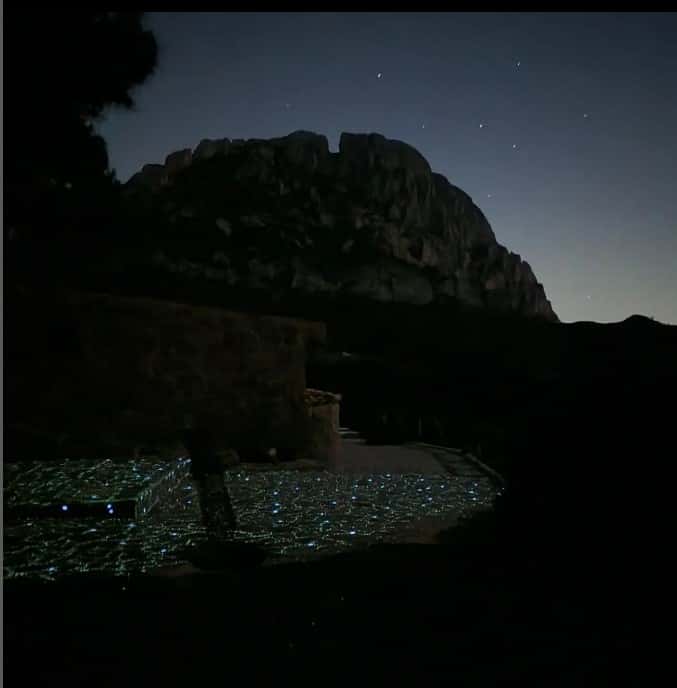 It’s very easy and the achievement is within everyone’s reach.
It’s very easy and the achievement is within everyone’s reach.
Above all, make sure that the area where you plan to embed these small phosphorescent stones is sufficiently dark during the night. If you live in a residential or urban area, with night lighting, then you can forget about this project, because the phosphorescence requires sufficient darkness to be clearly visible.
If, on the contrary, you have a house in the mountains or in the forest, then at night you will be able to see all these small luminous pebbles shining, until dawn.
It is only on a full night, when the luminosity is too high, that you will not be able to observe the phosphorescence.
On the contrary, on a dark night, you will have the impression of walking in the starry sky, when you walk on this floor encrusted with luminescent stones.
Glow-in-the-dark pebbles, how do they work ?
These small stones, gravel, fragments, pebbles contain synthetic and non-hazardous pigments, which are able to react and store ambient light. This energy is immediately converted into phosphorescence, which glows slowly and for a long time :
The release of the energy thus accumulated is done “drop by drop”, and can last up to more than 10 hours of time.
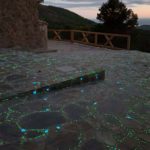 How to set up these phosphorescent stones
How to set up these phosphorescent stones
We advise you to embed them in concrete, mortar, plaster or cement when it is still fresh. The stone or gravel must be encrusted at least 2/3 of its thickness, in order to remain well fixed over time, and to resist trampling, or even bad weather, such as rain or frost.
When you want to incorporate these small phosphorescent gravels in an already existing construction, then there remains the solution of transparent or colored silicone glue.
It takes about 1 kg of these stones or its fragments to cover up to 3 m². Finally, it all depends on the concentration you want for your decor on the phosphorescent floor.
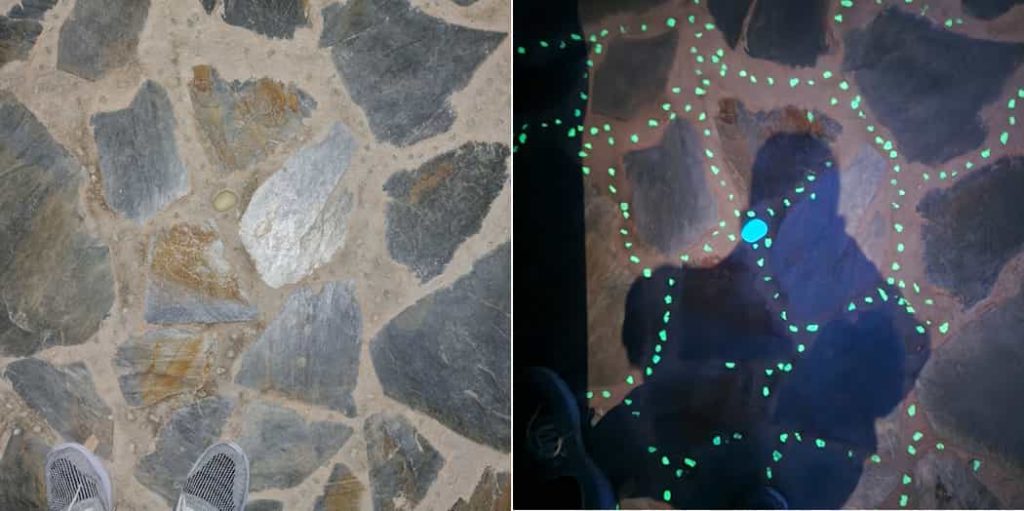 The different performance levels of luminescent gravels and pebbles
The different performance levels of luminescent gravels and pebbles
Stones and pebbles are often brighter and their phosphorescence lasts longer at night, compared to gravels.
You also have to take into account the color: by far, the green phosphorescent color is the most efficient, both in its luminous intensity and in the duration of its effect.
Often these materials are offered in 3 main emission colors: Green, Turquoise and Blue.
The company ARCO IRIS SAS, (site phosphorescentpaint.co.uk) offers up to 4 colors, with even purple phosphorescent stones.
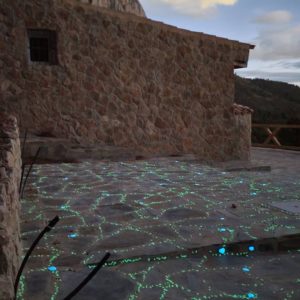 The diurnal or nocturnal aspect
The diurnal or nocturnal aspect
The materials have a slightly colorless, whitish, sometimes greenish appearance during the day.
We speak of “emitted color” to refer to the color of the light produced by the stone in the dark. It is indeed a luminous color which then emerges from this colorless stone during the day.
Resistance and composition
These stones and pebbles are relatively resistant, especially the gravels which are composed of glass (silica).
As for the stones, which are produced from plastics of the PS type, they can yellow slightly with the years, however the phosphorescence as for it, is almost eternal: that is to say that it does not drop in intensity with years.
Where to buy these stones here in England ?
The specialist in this field is ARCO IRIS, producer since 2010 : site phosphorescentpaint.co.uk
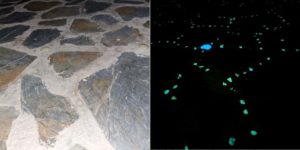
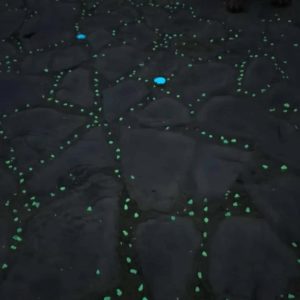
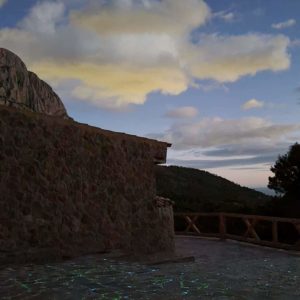



































































Leave a Reply